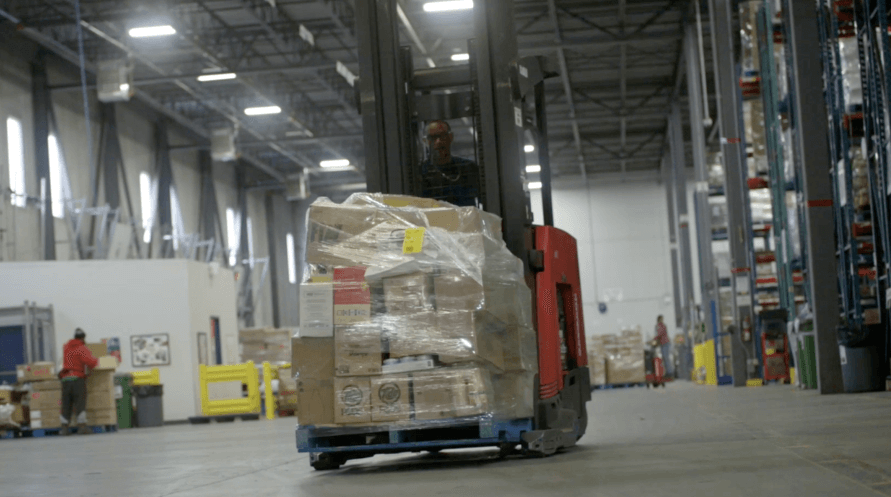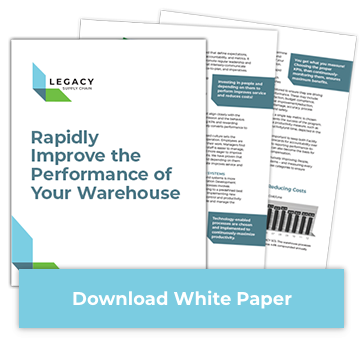Get Valuable Insights Into Your Warehouse’s Performance with These 40 KPIs

An effective lean warehousing strategy depends on measuring the right key performance indicators (KPIs). Learn about each warehouse KPI, how it’s measured and how it helps drive savings in your distribution center.
Table of Contents
- Warehouse KPI Checklist
- Warehouse KPIs: An Overview
- Inventory KPIs
- Picking KPIs
- Distribution KPIs
- Receiving KPIs
- Put Away KPIs
- Utilization KPIs
- Safety KPIs
- Cultural KPIs
- ECommerce KPIs
- Introduce KPIs to Your Warehouse
Warehouse KPI Checklist
Before we get started, we recommend downloading our warehouse KPI checklist to use as a guide for improving KPI-driven performance in your warehouse.
Warehouse KPIs: An Overview
To successfully manage warehouse operations, you need to consistently measure and analyze KPIs across a wide range of categories, each one intended to assess the efficiency, accuracy and safety of your warehouse. Understanding and monitoring KPIs across each of these categories is essential to identifying areas of improvement, making data-driven decisions and, ultimately, enhancing the performance and profitability of your warehouse.
In this article, we’ll examine KPIs across each of the following categories:
- Inventory KPIs: This category gauges the accuracy, turnover and availability of stock within your warehouse. These metrics are intended to help you efficiently manage inventory levels, reduce stockouts, minimize holding costs and ensure timely order fulfillment.
- Picking KPIs: These KPIs measure the efficiency of your order fulfillment process and provide insights into the speed and accuracy of your picking and packing operations.
- Distribution KPIs: This category includes any metrics used to monitor distribution workflows and identify issues within your process that could lead to increased rates of return.
- Receiving KPIs: The KPIs in this category track various aspects of the inbound logistics to gauge receipt accuracy, processing times and overall efficiency in handling incoming inventory.
- Put Away KPIs: Closely related to receiving KPIs, put away KPIs measure how efficiently you store received goods throughout your warehouse in the interest of optimizing warehouse organization and inventory management.
- Utilization KPIs: This category consists of metrics that assess the economical use of resources within your warehouse, including equipment, space and labor. These KPIs are intended to help you optimize resource allocation, minimize idle time and maximize productivity.
- Safety KPIs: This set of KPIs evaluates the efficacy of safety protocols and practices within your warehouse, ensuring a safe working environment for employees and reducing downtime due to workplace accidents.
- Cultural KPIs: Cultural KPIs assess the alignment of warehousing practices with your company’s organizational values and objectives, promoting a positive work culture and enhancing employee satisfaction, performance and retention.
- ECommerce KPIs: These KPIs monitor the performance of warehouse operations intended to support online order fulfillment.

Inventory KPIs
1. Carrying Cost of Inventory
Every warehouse manager knows that stagnant inventory costs money. Quantifying these specific carrying costs — including capital costs, inventory risk, inventory service costs and obsolescence — enables warehouse managers to make smarter buying and forecasting decisions, which leads to higher inventory turnover.
Inventory Carrying Rate × Average Inventory Value = Carrying Cost of Inventory
2. Inventory Turnover
Speaking of inventory turnover: You already know that the higher the rate of turnover, the better; but calculating your specific turnover rate helps you gauge your buying practice and product demand. Your warehouse management system (WMS) is designed to provide visibility and enable forecasting to keep goods moving.
The inventory turnover KPI quantifies how many times per year your distribution is able to go through its entire inventory. Compare this rate against industry averages to get a clear picture of your distribution center performance.
(Cost of Goods Sold) / (Average Inventory) = Inventory Turnover
3. Inventory-to-Sales Ratio
The inventory-to-sales ratio is affected by economic conditions and a company’s ability to weather unanticipated disruption. This ratio helps warehouse managers identify early cash flow problems by holding increasing inventory levels up against declining sales rates. It can also prevent back orders by highlighting an influx in sales and the potential for an increase in buying in order to satisfy a spike in demand.
The inventory-to-sales ratio of a successful warehouse distribution center will reflect a streamlined order fulfillment process. Warehouse managers should carefully monitor this KPI and leverage it as a tool for forecasting and predicting future inventory needs.
(End of Month Inventory Balance) / (Sales for Same Month) = Inventory to Sales Ratio
4. Inventory Accuracy
The accuracy of your physical inventory should correspond with that listed in your data but, realistically, there’s often a disparity between the two in any large distribution center. A high rate of inventory inaccuracy can result in unexpected back orders, dissatisfied customers and, ultimately, higher overall costs. Visibility is key to a high-performing warehouse. You can improve your inventory accuracy rate by conducting regular checks against your database, using cycle counting as a means of continually validating your database records.
(Database Inventory Count) / (Physical Inventory Count) = Inventory Accuracy
Want a complete PDF with these KPIs? Download your free copy here. >>
5. Inventory Shrinkage
Inventory shrinkage is a KPI used to monitor the loss of inventory due to theft, damage, clerical error, lost items, obsolescence or supplier fraud. Shrinkage is calculated by comparing recorded inventory against actual physical inventory to pinpoint any discrepancies.
A high rate of shrinkage can have a negative impact on company profits, so it’s important that warehouse managers thoroughly investigate every case of shrinkage to get to the root of the problem.
((Cost of Recorded Inventory – Cost of Physical Inventory)) / (Cost of Recorded Inventory) = Inventory Shrinkage
6. Order Lead Time
Order lead time, more commonly known as just lead time, refers to the length of time it takes for a customer to receive an order once it’s been placed. Order lead time not only has a direct effect on customer satisfaction — the shorter the lead time, the happier the customer — it also affects the amount of inventory a warehouse needs to carry at any point in time. Long lead time contributes to customer dissatisfaction and can force a company to rely heavily on demand forecasting to make orders, so it’s important that you monitor this KPI closely.
Supply Delay + Order Delay = Order Lead Time

Picking KPIs
7. Perfect Order Rate
This KPI measures how many orders your warehouse delivers without incident. In order to meet this standard, the correct item must have shipped on time and been received in good condition by the customer who ordered it. Lean practices are designed to help catch errors or inaccuracies before orders leave the warehouse.
You can improve your perfect order rate by strictly adhering to warehouse and distribution center best practices. By identifying problems as they arise and rooting them out at the source, you can catch imperfect orders before they ship to the customer.
(Orders Completed without Incident) / (Total Orders Placed) = Perfect Order Rate
8. Order Picking Accuracy
In addition to tracking shipment and delivery status, you should also measure order picking accuracy. An inaccurate order can result in inventory being returned to shelves, increased shipping time per average order, a higher rate of return and so on. This is also considered to be an eCommerce KPI.
Lean distribution practices eliminate waste and streamline order-picking processes to help maintain a higher order accuracy rate.
(Total Number of Orders) / (Perfect Order Rate) = Order Picking Accuracy
How does your supply chain stack up to the competition? Get your grade today >>
9. Units per Transaction
Units per transaction (UPT) is a common metric for many businesses. Depending on your industry, you may or may not be realistically expect your UPT to increase. Compare your warehouse distribution center UPT with historical averages and trends within your industry for the most useful analysis. In some industries, such as retail and CPG, you can increase UPT through sales training and checkout experience improvements that encourage upselling.
(Number of Units Sold) / (Number of Transactions) = Units per Transaction
10. Back Order Rate
Your warehouse’s back order rate is a telling indicator of whether you’re successful at forecasting purchases and inventory supplies. A sudden spike in demand will understandably result in a temporarily high back order rate for any given item, but a consistently high or increasing back order rate is a sure sign of poor planning and lack of responsiveness.
You can decrease your back order rate by accurately forecasting and vigilantly monitoring your warehouse’s inventory-to-sales ratio. A high inventory accuracy rate will also improve this KPI.
(Orders Unfulfilled at Time of Purchase) / (Total Orders Placed) = Back Order Rate
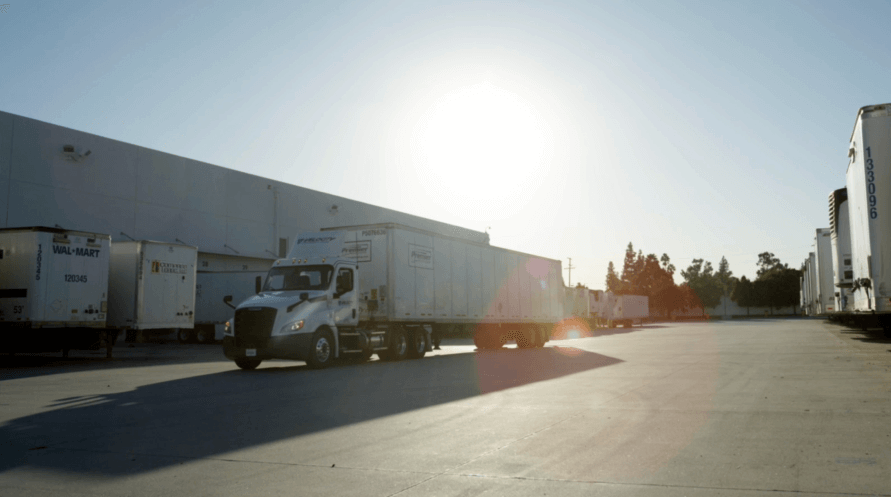
Distribution KPIs
11. Rate of Return
Rate of return is an incredibly useful KPI in a distribution center, especially when segmented by cause for return. Identifying causes for return — such as damage, late delivery, inaccurate product description or wrong item shipped — makes it easier for warehouse managers to address underlying issues and make the necessary improvements.
(Number of Units Returned) / (Number of Units Sold) = Rate of Return
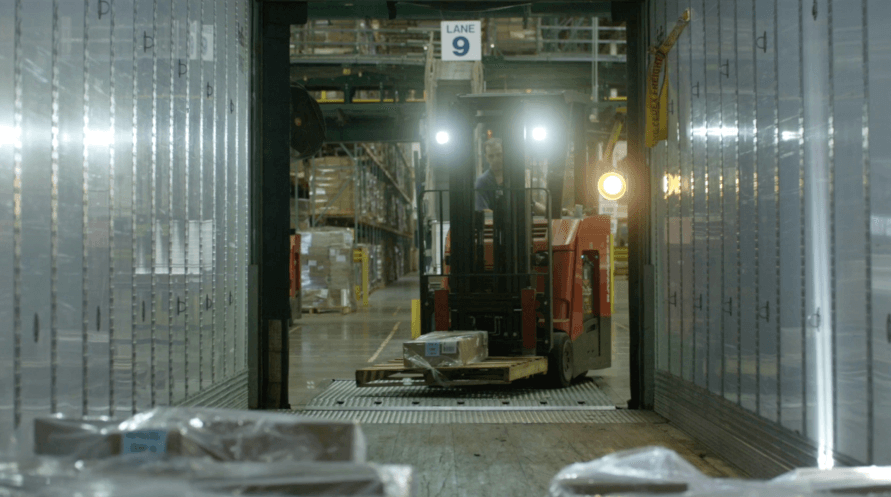
Receiving KPIs
12. Receiving Efficiency
Receiving efficiency is a metric used to evaluate warehouse workplace productivity when receiving stock. Inefficiencies in your receiving area can have a ripple effect across warehouse operations, so it’s vital to detect and eliminate inefficiencies as soon as possible in order to streamline the rest of your workflow.
Volume / (Number of Man Hours) = Receiving Efficiency
13. Receiving Accuracy
Receiving accuracy isn’t so much a measure of your own warehouse’s receiving process as it is of your suppliers’ performance. Oftentimes, warehouse workers prioritize stocking efficiency and may overlook erroneous shipments in their haste to get inventory on shelves. This presents a few issues: Without the actual items you ordered, you can’t fulfill customer orders and you might not be able to resell the erroneous goods. This KPI reflects the percentage of items received that match the expected quantity and specifications. The lower your percentage, the greater your risk of inventory discrepancies, stockouts and fulfillment delays.
(Number of Correctly Received Items) / Total Number of Expected Items) x 100 = Receiving Accuracy (%)
14. Receiving Cycle Time
The receiving cycle time reflects the total amount of time it takes to process a delivery. A short receiving cycle time is a clear indicator of an efficient delivery process, whereas a long receiving cycle time points to process inefficiencies. If your warehouse currently has a long receiving cycle time, you may want to consider decreasing the number of deliveries or rescheduling them so that your receiving area has more time to process each incoming delivery.
(Total Time for Delivery) / (Number of Deliveries) = Receiving Cycle Time
15. Receiving Cost per Line
In receiving, the cost per line KPI is used to measure the cost to receive a line item on a purchase order. Generally speaking, the higher the cost per line, the less efficient a warehouse’s receiving process. Cost per line enables warehouse managers to better understand the costs associated with receiving and implement process improvements for better inventory management.
(Total Cost of Receiving) / (Total Line Items) = Cost per Line

Put Away KPIs
16. Accuracy Rate
An effective and efficient put away process is one of the most critical components of good warehouse management because it has downstream effects on fill rates, which can lead to congestion in staging areas. Accuracy rate refers to the percentage of items put away correctly the first time; the higher your warehouse’s accuracy rate, the more efficient your put away process, with the ultimate goal of a 100% put away rate.
(Inventory Put Away Correctly) / (Total Inventory Put Away) = Accuracy Rate
17. Put Away Cost per Line
The put away cost per line KPI is essentially the same thing as the receiving cost per line KPI, with the clear exception that it measures the cost to put away a line item on a purchase order. Again, the higher the put away cost per line, the less efficient a warehouse’s put away process is.
(Total Cost of Put Away) / (Total Line Items) = Put Away Cost per Line
18. Put Away Cycle Time
Again, similar to receiving cycle time, put away cycle time measures the total amount of time it takes to put away items. A short put away cycle time is an indicator of an efficient process, whereas a long put away cycle time signifies that there’s room for improvement. One easy way to improve your put away cycle time is to rearrange your warehouse or invest in better employee training.
(Total Time for Put Away) / (Total Time) = Put Away Cycle Time
Utilization KPIs
19. Labor Productivity
This warehouse performance KPI measures your total output, such as units picked or orders fulfilled, related to your labor input, such as hours worked or number of employees. Like so many other KPIs on this list, labor productivity is a measure of efficiency; a higher rate indicates that you’re maximizing your workforce and achieving a higher output with the same or fewer labor resources.
(Output) / (Input) = Labor Productivity
20. Overtime Costs
As its name suggests, this metric quantifies the financial impact of overtime work hours on warehouse operations by tallying expenses incurred from overtime payments to employees. Measuring overtime costs can help you identify trends in labor expenses and reevaluate your workforce management strategy to reduce your total amount of overtime. To determine your overtime costs, simply multiply the total overtime hours worked over a set period of time by your company’s overtime hourly rate.
(Total Overtime Hours) x (Overtime Hourly Rate) = Overtime Costs
21. Absenteeism Rate
Although everyone needs to take a sick day now and then, a consistently high absence rate in the workplace can impede productivity and disrupt operations. The absenteeism rate KPI enables you to keep close tabs on this by measuring the percentage of scheduled work hours employees miss due to unplanned absences, such as sick leave, personal days or unauthorized leave. The general rule of thumb is that 1.5% is an acceptable rate of absenteeism.
(Number of Absent Hours) / (Total Scheduled Work Hours) x 100 = Absenteeism Rate (%)
22. Equipment Downtime
From forklifts to conveyor belts, equipment is essential to warehouse performance. Although some downtime is to be expected, particularly for planned maintenance, it’s imperative that you limit this downtime to avoid any lost productivity. To get this figure, simply tally up the total number of hours your equipment was non-operational or unavailable for use. Now that you’ve calculated your total equipment downtime, take a closer look at how much of the downtime was planned versus unplanned to see if there are opportunities to better manage maintenance schedules and overall equipment performance.
23. Equipment Utilization
Equipment utilization is a resource management metric that assesses the proportion of available equipment capacity that is being effectively utilized. This is a critical warehouse performance KPI to track, as optimal equipment utilization helps maximize throughput and reduces operating costs. To determine your equipment utilization, divide the total equipment operating hours by the total number of available hours and multiply by 100.
(Total Operating Hours) / (Total Available Hours) x 100 = Equipment Utilization (%)
24. Overall Equipment Effectiveness
Overall equipment effectiveness (OEE) gauges the performance of the equipment in your warehouse. To calculate OEE, you must first determine your performance, availability and quality percentages:
- Performance refers to the speed or efficiency at which your equipment operates compared to its ideal or maximum capacity. It accounts for production speed, cycle times and any speed losses due to factors such as equipment slowdowns, minor stops or suboptimal operating conditions.
(Total Units Produced) / (Ideal Cycle Time x Total Operating Time) × 100 = Performance (%)
- Availability refers to the amount of time that equipment is available and operating as intended during scheduled production time. It accounts for unplanned downtime, scheduled downtime for maintenance or changeovers and any other factors that prevent the equipment from operating when needed.
(Total Operating Time – Downtime) / (Total Operating Time) × 100 = Availability (%)
- Quality refers to the number of products that meet quality standards or customer specifications. It accounts for defects, errors and rework.
(Total Good Units Produced / Total Units Produced) × 100 = Quality (%)
Once you’ve calculated these percentages, you can determine your OEE:
Availability (%) × Performance (%) × Quality (%) = Overall Equipment Effectiveness (%)
25. Space Utilization
Inventory management is a key component of warehouse performance, which is why there’s an entire KPI category dedicated specifically to it. Though it’s technically a utilization KPI, space utilization — that is, the measure of how effectively you utilize your available storage capacity — overlaps with inventory KPIs, offering insights into where there’s wasted space, how to better organize your inventory and how to improve inventory turnover. To calculate space utilization, divide the amount of storage space you’re using by your total amount of available storage space and multiply by 100.
(Total Used Storage Space) / (Total Available Storage Space) x 100 = Space Utilization (%)
26. Warehouse Throughput
One of the most important warehouse KPI examples in this article, warehouse throughput measures the rate at which goods are processed and move throughout your warehouse. It’s a key metric that helps to identify bottlenecks and optimize existing processes. The higher your throughput, the more successful your warehouse is at efficiently fulfilling orders, which has a direct impact on customer satisfaction and revenue. To determine your warehouse throughput, divide your output (such as total number of orders fulfilled) by the amount of time it took to achieve that output.
(Total Output) / (Time Period) = Warehouse Throughput
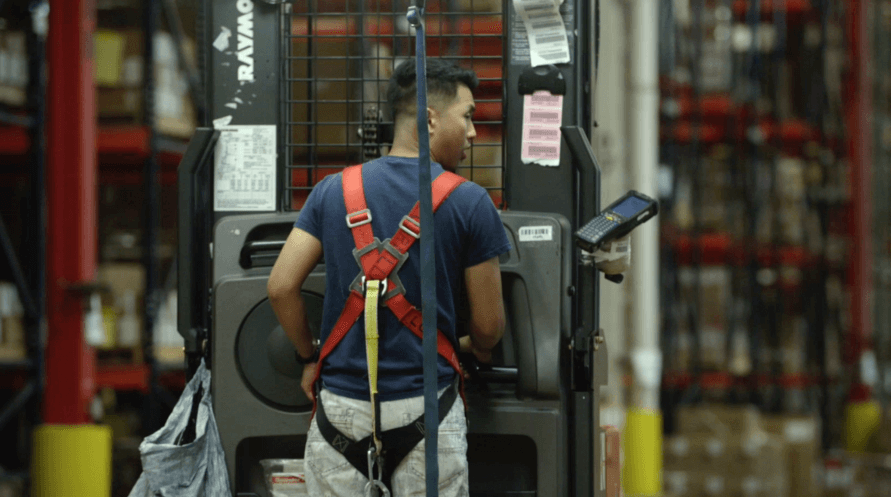
Safety KPIs
27. Time Lost Due to Injury
It goes without saying that the safety of your warehouse staff is a priority for non-business-related reasons, but the fact of the matter is that injuries sustained on the job can have a serious impact on workplace productivity and overall costs.
Any time an employee misses work due to injury, warehouse managers need to draw on supplementary resources and even offer other employees overtime to make up the difference. As a result, time lost due to injury is a valuable metric to monitor because it can help warehouse managers identify preventative measures they can take to ensure workplace safety in the future.
(Lost Time in Hours Due to Accidents) / (Total Number of Hours Worked) = Time Lost Due to Injury
28. Accidents per Year
No equation needed here — the accidents per year KPI measures exactly what its name implies. Obviously, every warehouse manager aims to keep this number as low as possible, with the ultimate goal of zero accidents per year.
29. Time Since Last Accident
Again, like accidents per year, this one’s pretty self-evident and is a key indicator of warehouse safety. Think of it this way: You want your number of accidents per year to be low, and the time since your last accident — typically measured in days — to be high.
30. Total Recordable Incident Rate
Your warehouse’s total recordable incident rate (TRIR), sometimes referred to as the total case incident rate (TCIR), is the total number of work-related injuries per 100 full-time workers during a one-year period.
TRIR is an incredibly important KPI to track because the Occupational Safety and Health Administration (OSHA) uses this metric to gauge companies’ safety performance and monitor high-risk industries. The higher your TRIR, the more likely your warehouse will be subject to surprise OSHA inspections and, potentially, penalties. Your insurance company might also use your TRIR to help determine premiums — the higher your TRIR, the more you pay out of pocket.
((Number of Recorded Injuries in a Year × 200,000)) / (Number of Hours Worked in a Year) = Total Recordable Incident Rate

Cultural KPIs
31. Average Training Time per Employee
A fairly simple KPI, your company’s average training time per employee is a measurement of how much time you dedicate to onboarding and training each new hire (or, as may be the case, retraining existing personnel). This metric offers valuable insight into how effective your company’s training curriculum is at preparing employees for the job.
Although a high average training time per employee isn’t necessarily a bad thing — after all, investing in your people is important — it could point to potential issues if you aren’t seeing a return on that investment in the form of productivity gains. A high rate without a tangible ROI might suggest that your training program needs revising to be more robust or that it needs streamlining.
(Total Training Hours) / (Total Number of Employees Participating in Training) = Average Training Time per Employee
32. Employee Turnover Rate
Although employees come and employees go, a high attrition rate is cause for concern because it usually points to larger issues within your warehouse. Your employee turnover rate (ETR) is a critical KPI because it enables you to gauge the stability of your workforce. If your warehouse has a high ETR, you might want to consider consulting your staff to find out where there’s room for improvement.
(Employees Who Have Left) / (Average Number of Employees) × 100 = Employee Turnover Rate (%)
33. Employee Net Promoter Score
Using the same logic as the Net Promoter Score, the employee net promoter score (ENPS) enables you to determine how engaged your employees are, how satisfied they are with their jobs, and how loyal they’re likely to be.
Employees simply rate how likely they would be to recommend your company’s workplace on a scale of 0 to 10, with 0 indicating “not at all likely” and 10 indicating “extremely likely.” Employees who rate your company anywhere between 0–6 qualify as “detractors,” while those who rate it a 7 or 8 are considered “passive”; you should take time to address employees who fall into either of these categories to find out what would make their workplace experience better and what cultural improvements they recommend. Employees who rate your workplace a 9 or 10 are considered “promoters” and are strong proponents of your company and its culture.
34. Manager Satisfaction Score
Good leadership is a vital component of a strong company culture, therefore, it’s just as important to evaluate manager satisfaction as it is employee satisfaction. The easiest way to gauge this is by applying the same concept as the ENPS, except to your team of warehouse managers.
Additionally, you’ll want to understand the relationship between managers employees and how that affects overall employee workplace satisfaction. The best way to evaluate this KPI is to conduct anonymous surveys asking employees to rate their managers in order to see how well the management bench is doing.
35. Cultural Entropy Score
Cultural entropy refers to both the amount of energy spent doing unproductive or unnecessary work, and the level of dysfunction within an organization driven by fear-based actions from leaders. To that end, your company’s cultural entropy score is a measure of the overall cultural health of your workplace environment.
The more fearful your leadership team — meaning, the more given they are to control, manipulation, bureaucracy, internal competition, etc. — the higher your cultural entropy score and, consequently, the lower your level of employee engagement. A low cultural entropy score is an indicator of strong leadership, a culture of accountability and trust, a highly engaged workforce and an overall positive workplace environment.

ECommerce KPIs
Although all of the KPIs listed are important to eCommerce fulfillment performance, there are a few that are critical indicators of your ability to deliver value directly to the consumer, whether you’re employing pick and pack, kitting and assembly or subscription box fulfillment:
36. Order Fill Rate
Partially filling an eCommerce order is one of the quickest ways to lose an online sale. Order fill rate refers to the percentage of orders that are immediately — and completely — fulfilled by available stock. A high order fill rate requires seamless visibility between your WMS and your storefront, inventory synchronization and the ability to optimally service customers from various distribution locations. To calculate your order fill rate, divide the number of customer orders shipped in full by the total number of orders placed and multiply by 100.
(Number of Orders Shipped in Full) / (Number of Orders Placed ) × 100 = Order Fill Rate (%)
37. Perfect Order Rate
As its name implies, perfect order rate (POR) measures the total number of online orders fulfilled on time and to the right location without any damage and with the proper documentation. POR overlaps with a number of other KPIs, including order accuracy, on-time delivery rate and customer satisfaction. The higher your POR, the happier your customers are and the better your overall warehouse performance. To determine your POR, divide the number of orders you fulfilled without error by the total number of orders you fulfilled during that same period and multiply by 100.
(Number of Orders Without Errors) / (Total Number of Orders) x 100 = Perfect Order Rate (%)
38. Backorder Rate
In an ideal world, retailers wouldn’t sell products that weren’t actively available and in stock, but backorders can and do happen. Under certain circumstances, backorders can even be a good thing, as they’re indicative of healthy consumer demand; however, too big of a backorder backlog can negatively impact customer satisfaction and point to problems with your fulfillment process or supply chain.
Backorder rate is a useful metric for gauging whether your existing inventory management and supply chain processes are capable of sustaining demand and whether your demand forecasting data is accurate. To calculate your backorder rate, divide your number of backorders by your total number of orders and multiply by 100.
(Number of Backorders) / (Total Number of Orders) x 100 = Backorder Rate (%)
39. On-time Delivery
Thanks to the Amazons of the world, consumers now expect near-instant gratification, meaning online channels must be able to deliver at increasingly rapid rates in order to remain competitive. On-time delivery (OTD) is one way to stay on top of these expectations. OTD is a measure of customer order lines shipped on or before the requested delivery rate. In order to determine your company’s OTD, divide the total number of units delivered on time by the total number of units shipped.
(Number of Units Delivered on Time ) / (Number of Units Shipped) = On-Time Delivery
40. Time in Transit
As its name implies, time in transit refers to the total number of days or hours from when a shipment leaves your distribution center to when it arrives at the customer’s location.
Introduce KPIs to Your Warehouse
Defining and improving each of the warehouse KPIs on this list will put your warehouse on track to increase performance and drive cost savings at every level. An experienced supply chain engineer can help you identify additional performance metrics for your warehouse or distribution center.
Legacy drives savings by focusing on strategic ways to improve, grow and protect your business. Contact us today to discuss introducing these core KPIs into your warehouse.
Get Insights. Stay Ahead.
Get the latest news and insights via email on warehouse improvement, transportation optimization, labor strikes and international shipping rate changes.Popular Posts
Search Posts
-
2024 Q1 Freight Landscape: Trends, Challenges, and Predictions
As the first quarter of 2024 comes to an end, here are some observations over the past few months as well as predictions about the trucking...
+ Read more -
Baltimore Bridge Impact Assessment – Update
Following the recent Baltimore Bridge collapse and subsequent port closures, we want to keep our customers informed about the situation and...
+ Read more -
Global Momentum Builds for Charge on Global Shipping Sector’s CO2 Emissions
A growing coalition of 47 countries, including key players like the European Union, Canada, Japan, and various Pacific Island nations, is...
+ Read more

